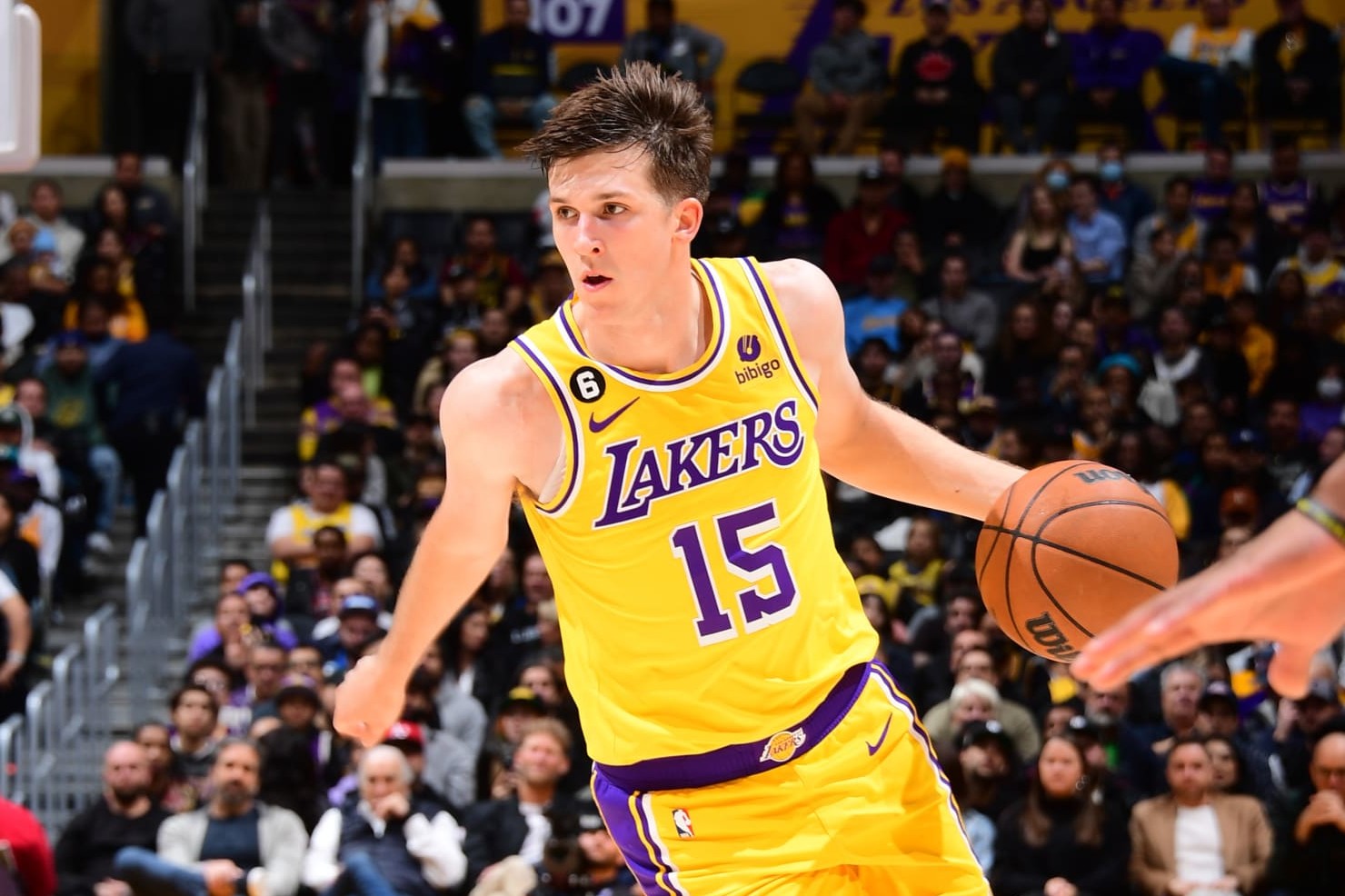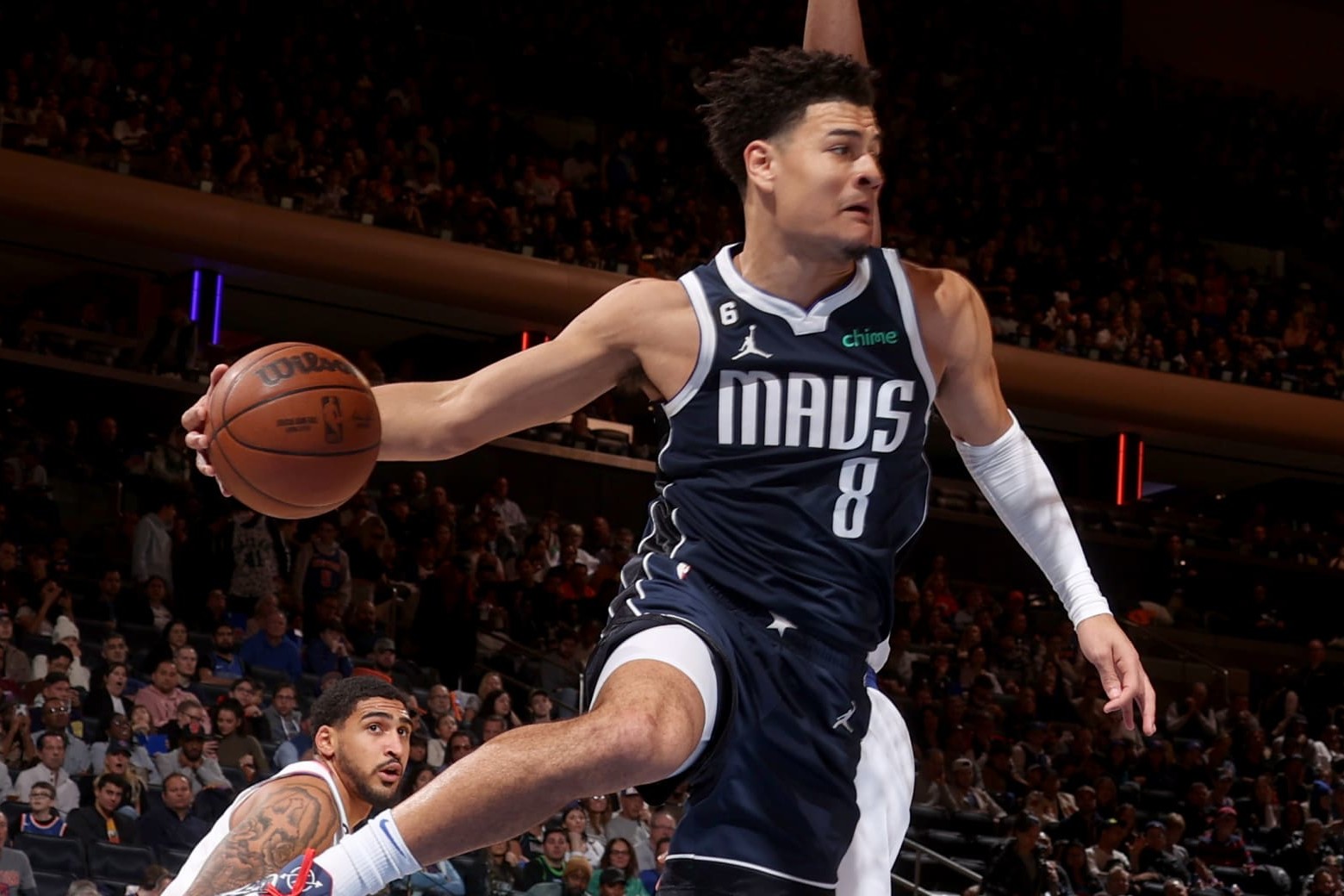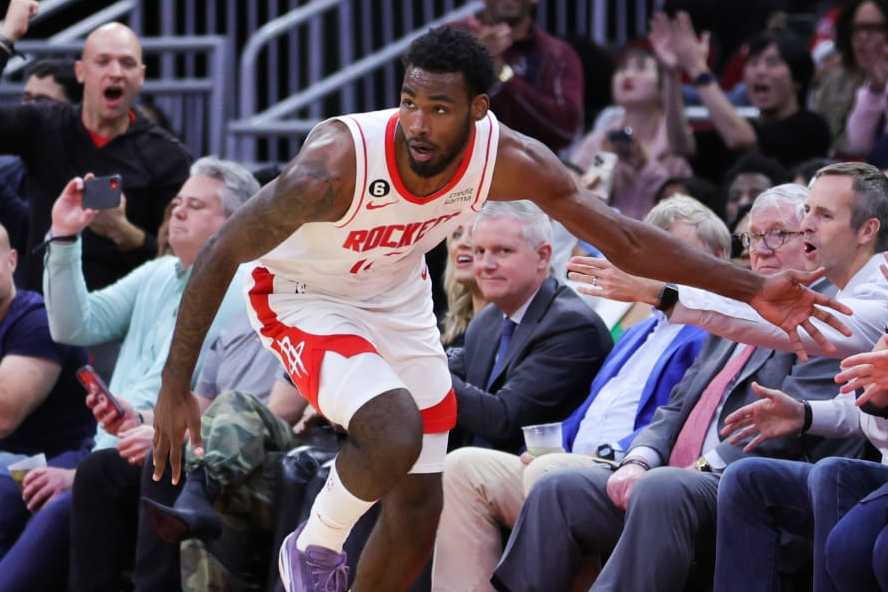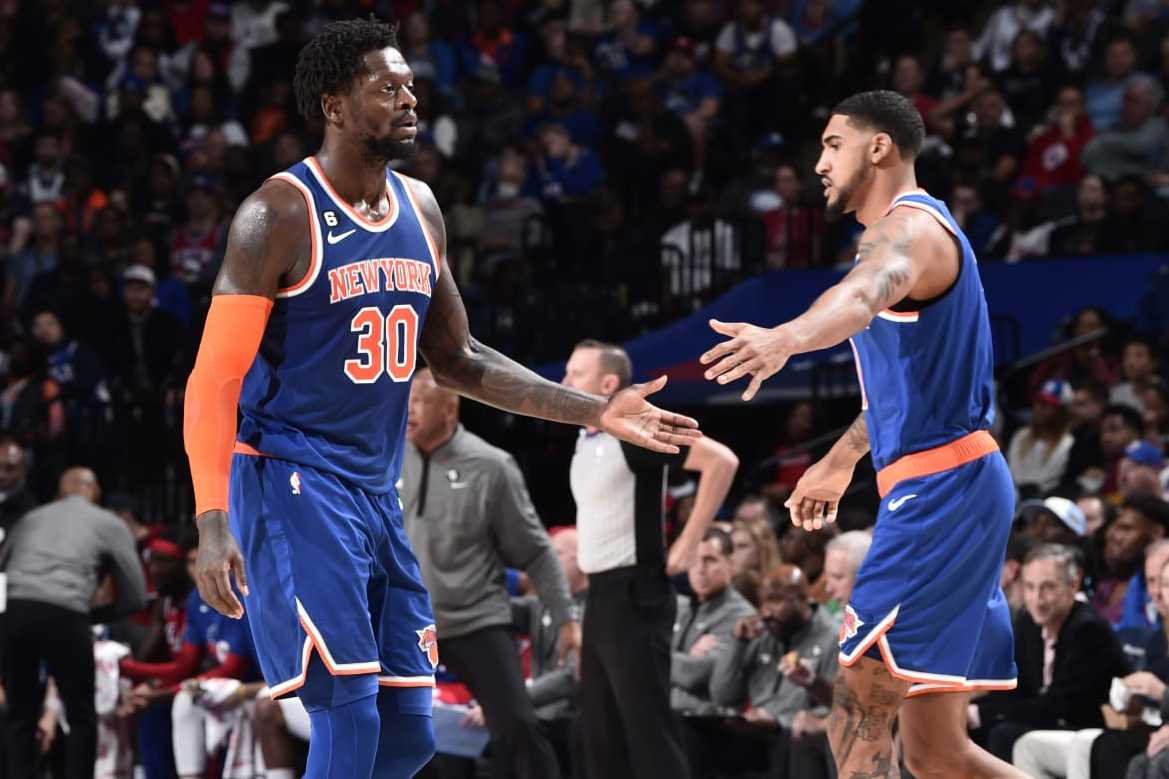NBA Starting Lineup Changes That Need to Happen
NBA Starting Lineup Changes That Need to Happen

Building an effective NBA starting lineup is as much art as science. It takes a measure of feel and a sense of balance that might not be so easy to quantify, but then there are also the numbers that tell an objective story about which configurations work and which don't.
Samples remain relatively small at the quarter mark of the 2022-23 season, but several starting lineups have shown us enough to warrant some judgment. And some change.
We'll lean on net rating and specific statistical deficiencies where applicable, but the reasoning behind some of the suggested lineup tweaks will come from a more zoomed-out perspective. In several cases, we'll highlight veteran players in first units who are blocking the path of developing youngsters—most of whom matter far more to their teams' long-term plans.
The goal is to help these teams put their best five-man groups on the floor, and "best" may not always mean the same thing in every circumstance.
Let's tinker.
Josh Green Earns His Moment in Dallas

Current Starters: Luka Dončić, Spencer Dinwiddie, Tim Hardaway Jr., Dorian Finney-Smith, Dwight Powell
Proposed Change: Josh Green for Dinwiddie
The Dallas Mavericks would have a decent shot at finishing in the West's top eight with four cardboard cutouts surrounding Luka Dončić in the starting lineup, and their decision to begin the season with JaVale McGee and Reggie Bullock in the first unit almost felt like the first step toward testing that theory. The Mavs quickly pivoted away from McGee and later gave Bullock's spot to Hardaway Jr., but more tweaks should be in the offing.
Josh Green's constituency is growing beyond meme-happy Mavs Reddit threads as the third-year wing continues to expand his game. In 20.0 minutes per contest, he's averaging 7.0 points on 58.2 percent shooting from the field with a sparkling 44.4 percent knockdown rate from long distance. Though a low-usage option (not a problem with Luka threatening to lead the league in usage rate for the third straight year), Green has added passable punch off the bounce and has improved dramatically as a decision-maker in space.
Big fan of what I've seen from Josh Green this season. Pretty slick no-look dime on the short roll here: pic.twitter.com/Yu5oi5L7Ns
— Jackson Frank (@jackfrank_jjf) November 9, 2022
Green is also second on the team to Dorian Finney-Smith in Defensive Estimated Plus/Minus, owns a 91st percentile steal rate among wings and wreaks havoc on the offensive glass. Add all that up, and you've got an ideal role-playing weapon who's earned the right to start.
Dallas can shift Spencer Dinwiddie to the bench, which would allow him to cook as the top option when Dončić sits. Nothing would prevent the Mavs from using both of their best ball-handlers together when necessary, but there's some logic to splitting their only legitimate playmakers more often. So far, Dinwiddie and Dončić's shared minutes have yielded a minus-1.1 net rating dragged down by putrid defensive efficiency. Swap in Green, and things look more balanced.
Lastly, when Dončić, Green, Tim Hardaway Jr. (on a heck of a heater since his own reintroduction to the starting five) and Dorian Finney-Smith take the floor together, the Mavericks are obliterating opponents to the tune of a plus-45.3 net rating across 110 possessions. That sample needs to grow.
Many have been clamoring for Christian Wood to expel Dwight Powell from the first unit as well, but Green is the guy who makes the most sense if Dallas makes a change.
Austin Reaves Sends Patrick Beverley Packing

Current Starters: Patrick Beverley, Dennis Schröder, Lonnie Walker IV, LeBron James, Anthony Davis
Proposed Change: Austin Reaves for Beverley
Reaves has been a target for opposing offenses since cracking the Los Angeles Lakers rotation last year, and he can look particularly bad on the wrong nights. The Dec. 6 loss to the Cleveland Cavaliers was one of those, though I'm not sure we should write a guy off for failing to contain an in-rhythm Donovan Mitchell. Spida flambés 90 percent of wing defenders in the league when he has it rolling.
Besides, any criticism of Reaves' defense ignores the fact that Beverley, purportedly a stopper, isn't doing much better. Though the 34-year-old continues to play with irascible intensity, he hasn't been of much help on that end—unless you consider ill-advised hacks at half court helpful.
Beverley is currently committing 5.1 personal fouls per 100 possessions, fourth-worst among the 81 guards who've logged at least 25.0 minutes per game this season. His style helps put teams into the bonus early, which can cripple a defense. And he's actually made a significant improvement over his foul rates of the last several years. Viewed in that context, history suggests the issue could get even worse.
Even if you're not convinced the 6'5" Reaves and the 6'1" Beverley are at worst comparable on D, the other end of the floor settles the issue. Pat Bev is making just 38.5 percent of his twos and 22.0 percent of his threes, unfathomably low percentages for an undersized guard who also isn't his team's primary distributor. This is a full-on "What would you say you do here?" situation.
Reaves, meanwhile, is at 65.8 percent on twos and 36.4 percent on threes while more than doubling Beverley's points per game in roughly equal playing time.
Don't forget the little things, either. Reaves makes a handful of shrewd reads every game to help the Lakers on the margins.
Watch Reaves' flash middle remove PG's help at the block, creating a true 1v1 for Russ against Kennard.
— Cranjis McBasketball (@Tim_NBA) November 15, 2022
This is how LA has most frequently beaten the "box" 2 elbow 2 block help defense on isolations/post ups. pic.twitter.com/PxmlNfbTPR
Beverley has far more experience, but he's almost strictly a spot-up threat who isn't hitting anything from the perimeter and commits too many overly aggressive errors. This isn't complicated.
Bennedict Mathurin Has Waited Long Enough

Current Starters: Andrew Nembhard, Tyrese Haliburton, Buddy Hield, Jalen Smith, Myles Turner
Proposed Change: Bennedict Mathurin for Hield
The Indiana Pacers have had a handful of injuries lately that make it a little iffy to call Nembhard, Haliburton, Hield, Smith and Turner their "current starters." Aaron Nesmith spent 11 games in the first unit and even got the nod at power forward on Dec. 5 when Turner was out, and Nembhard has only recently nosed his way into the group. Mathurin started that same Dec. 5 contest against the Dubs, his first of the year, further confusing things.
All indications are that the Pacers prefer to use the above-listed current starters when everyone's healthy. They've gone to it eight times, more than any other opening quintet. So that's what we're going with.
The case for Mathurin becoming a fixture is easy. He's the only first-year player presently pushing Paolo Banchero for Rookie of the Year and leads everyone from the 2022 draft class in total points while hitting 37.5 percent of his threes, drawing fouls at high rates and generally looking like a legitimate cornerstone on the wing. If his current numbers hold, he'll be just the fifth 20-year-old guard to finish a season averaging over 18.0 points on at least 55.0 percent true shooting since 1982-83.
Indiana should be heavily invested in pairing him with Haliburton as often as possible. Hield remains a reliable long-range gunner, but he'll be 30 a week before Christmas and isn't remotely as valuable to the Pacers' long-term plans. Trading the veteran guard to a contender in need of shooting would sort all this out, and that might be the likeliest outcome. With Hield linked to the Lakers for months, it's probably a safe bet he'll vacate his spot in the first unit one way or another.
That said, Indy should still act now. The Pacers have performed better with Haliburton and Mathurin on the court without Hield than they have with Haliburton and Hield manning the 1 and 2 while Mathurin sits. The truly jarring side note to those numbers is that Haliburton and Mathurin have only shared the backcourt across 27 non-garbage-time possessions, a criminal underutilization of the team's two most important pieces.
Sure, Hield is mostly a 3 now. But Nembhard suddenly looks like a keeper and deserves his own starting spot. Indiana should let Mathurin and Haliburton loose, ideally alongside Nembhard, as they evaluate whether those three can work together over a large sample.
What's more, Hield is a known commodity around the league. Indiana doesn't need to "feature" him to prop up his trade value. In fact, because everyone understands what one of the best high-volume three-point shooters of his era brings to the table, there's more downside than upside to keeping Hield in a major role. If he gets hurt, he's immediately a less attractive target. The Pacers should know that after Turner's injury soured teams on acquiring him at last year's deadline. Though Turner now projects as more of a keeper (all's well that ends well), Hield isn't someone Indiana should even be considering as a long-term piece.
Houston Puts Eric Gordon on Ice

Current Starters: Kevin Porter Jr., Jalen Green, Eric Gordon, Jabari Smith Jr., Alperen Sengün
Proposed Change: Tari Eason for Gordon
As with the Indiana Pacers and Buddy Hield, this is another case where youth-focused timelines and trade-value preservation are motivating factors. Gordon is and will be a sought-after commodity on the trade market, and he's been nowhere near as durable as Hield over the years. If anything, the Houston Rockets should be more motivated than the Pacers to put their veteran wing on ice so injuries don't remove him from acquiring teams' list of targets.
Gordon has started all 20 games he's played this season, averaging 12.3 points and 2.6 assists for the young Rockets. Even with his three-point accuracy down from last year's slick 41.2 percent, the 33-year-old still profiles as one of the top available plug-and-play wings.
Houston, though, has other options it should explore at the position.
Eason, a rookie forward picked 17th in the 2022 draft, profiles as the most intriguing. Deployed at the 3 in only 8 percent of his minutes to date, Eason could struggle if tasked with defending quick perimeter scorers. He's been iffy on the ball but has shown some facility for handling larger combo forwards.
Nothing flashy but if you want to see some good sound defense check out Eason's defense vs Tobias Harris pic.twitter.com/GKeExIOVmZ
— Lachard Binkley (@BinkleyHoops) December 6, 2022
The real magic happens when Eason is off the ball, roaming in search of deflections and steals.
Our Passing Lane Defense metric = the rate of deflections and interceptions a player generates per 75 possessions
— BBall Index (@The_BBall_Index) December 4, 2022
The top 10:
1. TJ McConnell
2. Alex Caruso
3. De'Anthony Melton
4. DSJ
5. Javonte Green
6. Thad Young
7. Tari Eason
8. Paul George
9. OG Anunoby
10. Killian Hayes pic.twitter.com/Bl8JgSBgSA
Jabari Smith Jr. came into the league billed as a multi-position defensive weapon, so his presence could allow Eason to handle the bulkier frontcourt opponent. And with Smith heating up of late as a shooter after a frigid start (35.1 percent on threes in November; 46.1 percent in December), Eason doesn't need to be a deadeye sniper. That said, Eason is hitting 36.2 percent of his threes on low volume. That's actually better than Gordon so far, which means Houston might not be giving up as much stretch as you think with this lineup change.
Promoting Eason would also allow Houston to lean harder on its strengths. It's been a rough year overall, but the Rockets lead the league in offensive rebound rate and free-throw rate. Eason checks in at the 100th percentile (hard to beat that!) among forwards in the former metric and is no slouch in the latter, where he's in the 66th percentile at his position in shooting fouls drawn. His energetic pursuit of second-chance points and nose for the ball on defense would help the Rockets starters accumulate extra possessions—a key for a team that turns the ball over more than anyone and resides in the bottom five in effective field-goal percentage.
Kenyon Martin Jr. would be a defensible alternative to Gordon as well, but he's not a disruptor on the level of Eason.
The Knicks Give the People What They Want

Current Starters: Jalen Brunson, Quentin Grimes, RJ Barrett, Julius Randle, Mitchell Robinson
Proposed Change: Obi Toppin for Robinson
The marginalization of Toppin is a point of frustration for New York Knicks fans, but the mechanics of getting him into the lineup are fraught. We've got to try anyway.
Randle is drastically overpaid and a difficult player around whom to build a competent offense because of his preference for on-ball duties and lack of spacing. Simply trading him would be ideal, but the $117 million extension he signed in 2021 is prohibitive. The Knicks shouldn't be in the business of using draft picks as sweeteners to get off a deal, especially one they handed out a little more than a year ago. Unfortunately, New York is stuck with Randle in a major role.
Robinson also got the bag from New York this past offseason, and his shot-blocking has endeared him to Tom Thibodeau, who might be the last coach clinging to size over skill in the frontcourt. Robinson is a deterrent inside, but he has to be the one excised from the starting group to make room for Toppin.
Thibs has been hesitant to pair Randle and Toppin for a while due to their lack of collective rim protection. He's not wrong to be concerned on that front. Or, at least the tiny 140-possession sample in which opponents have shot 70.7 percent at close range suggests he hasn't been wrong so far.
That said, the offense hums with those two in the 4 and 5 spots. The Knicks are scoring 116.4 points per 100 possessions and capitalizing on five-out looks to attack the basket and pile up free throws. Anecdotally, the Randle-Toppin tandem has also played a major role in digging the team out of late holes more than once this season.
Toppin's improvement as a shooter (30.8 percent from deep last year versus 35.1 percent in 2022-23) opens up so many more possibilities for drive-focused scorers like Brunson and Barrett, who routinely find Robinson's defender waiting for them in the lane. Though there'd be tradeoffs, it's never a bad idea to set up your most important players for success. Toppin would do that better than Robinson, at least offensively.
The best approach would be moving on from Randle and giving Toppin his spot alongside Robinson, preserving some offense-defense balance and adding spacing. But Randle is going nowhere, and it'd be more intriguing to see if the Knicks could go off the Thibodeau script a little by focusing on offensive dynamism over a long stretch.
Stats courtesy of NBA.com, Basketball Reference and Cleaning the Glass. Accurate through Dec. 6. Salary info via Spotrac.
Grant Hughes covers the NBA for Bleacher Report. Follow him on Twitter (@gt_hughes), and subscribe to the Hardwood Knocks podcast, where he appears with Bleacher Report's Dan Favale.
